White light telescope: Scopos 80mm Triplet f/7
White light filters: Solar Continuum used together with a Baader Herschel Wedge.
Hydrogen Alpha: Lunt 60mm Solartelescope + Lunt 50mm front filter for double stack.
Extra equipment: 0.5x focal reducer, 1.5x barlow, 2.5x Powermate
Camera: DMK31 USB Mono
178 AVI files in 92,6gb data were recorded.
The white light images were recorded after the hydrogen alpha images.
White Light:
When i applied wavelets to my images i saved them out with 3 different gamma settings: 0.70, 1.00 and 1.30. These were used to make HDR images in Photomatix.
Mosaic of 5 images

Link 2000 x 2000 full resolution
Images with a 1.5x barlow:


Image with a 2.5x Powermate:

Hydrogen Alpha:
0.5x focal reducer - HDR from 3 exposures.

Alternative of the above.

No magnification - Mosaic of 5 images.

Link 2000 x 2000 full resolution
No magnification - Mosaic of 9 images.

Link 2000 x 2000 full resolution
1.5x barlow - Mosaic of 9 images.

Link 2000 x 2000 full resolution
1.5x barlow - Mosaic of 17 images.

Link 2000 x 2000 full resolution
Images with 2.5x powermate - Here i took 3 exposures each to make HDR images from them, but i gave up on the HDR part.


I noticed how quickly that prom was moving on my 3 exposures. Here is a small GIF animation to show its development. 1 minute between images.

I then hurried to get started on my time lapses.
I had used AviStack2 to stack my AVIs but it had made some pretty bad stacks with severe ghosting on almost half my time lapse images.
I tried Registax 6.108 again in batch mode. It did the job without a hitch and much faster than AviStack2. Furthermore the stacked images were also better, no moving features from frame to frame due to bad stacking. Saved both a stacked and a wavelet applied image for each AVI in batch mode. That saved me a ton of time instead of having to manually apply wavelets on the stacked images as i would have with AviStack2.
I also tried Registax6 to align my time lapses. It did a much better job and faster than Registax5 which i had always used.
Very satisfied with Registax6, it has replaced AviStack2 for me now.
Sequence A - 600 frames were recorded every 30 seconds with 2.5x powermate. Sadly only 8 frames, a tree got in the way of my shot. I thought i had more time, guess i rushed too fast to make time lapses.
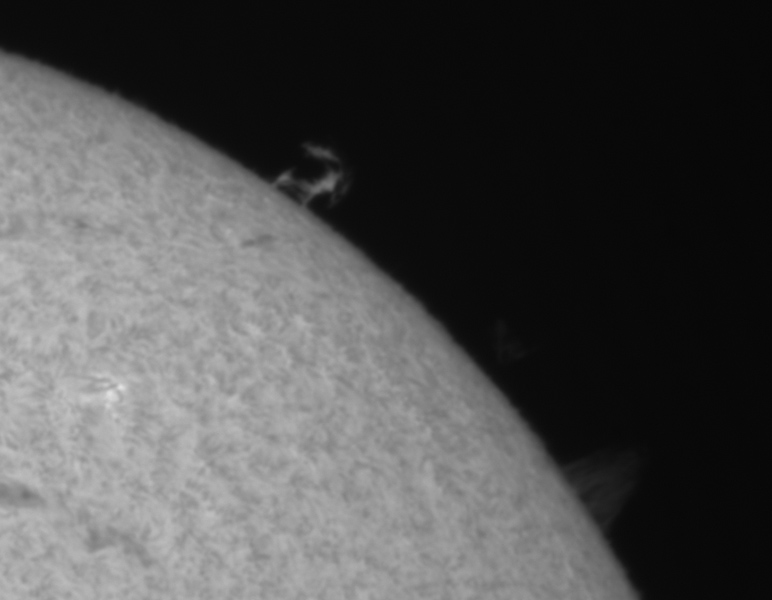
Link 382kb quicktime at 862 x 670
Sequence B - Only 2 frames were recorded. I really messed up with the recordings which i didn't noticed until i started on the next sequence.
Had accidently set exposure to 1/27th so it was capturing at 15 fps instead of 30 fps. So it took a little over a minute per AVI.
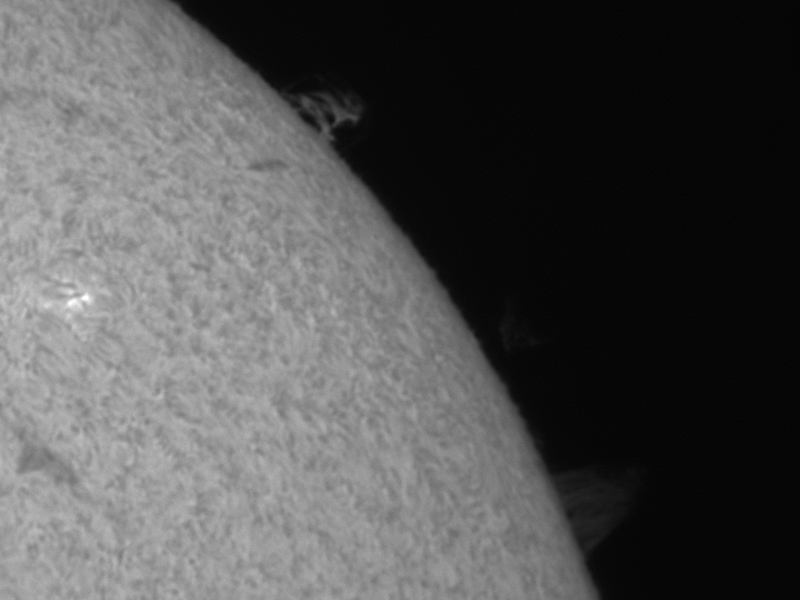
Here is a section - 1 minute between the 2 frames:
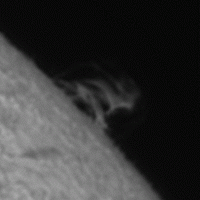
Sequence C - 600 frames were recorded every 30 seconds with 2.5x powermate for 30 minutes.
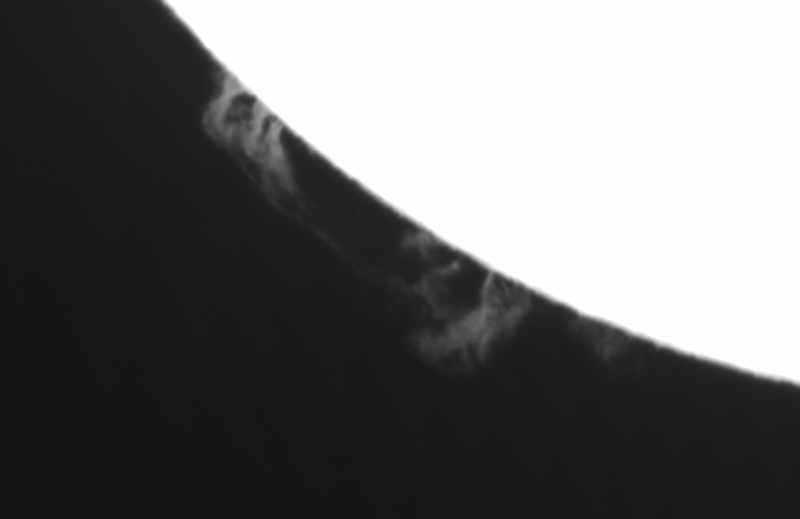
Link 2mb quicktime at 881 x 572
Sequence D - 600 frames were recorded every 30 seconds with 1.5x barlow for 30 minutes. Went back to this one and this time with more exposures to get the fainter proms as well. This turned out to be a good idea.
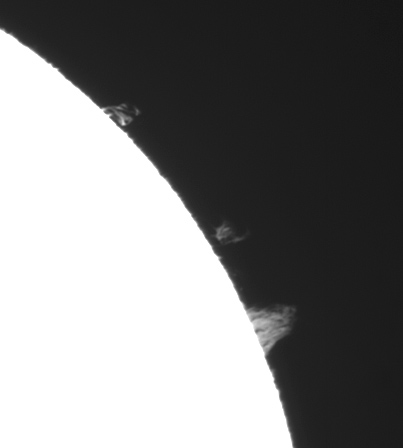
Link 147kb quicktime at 403 x 448